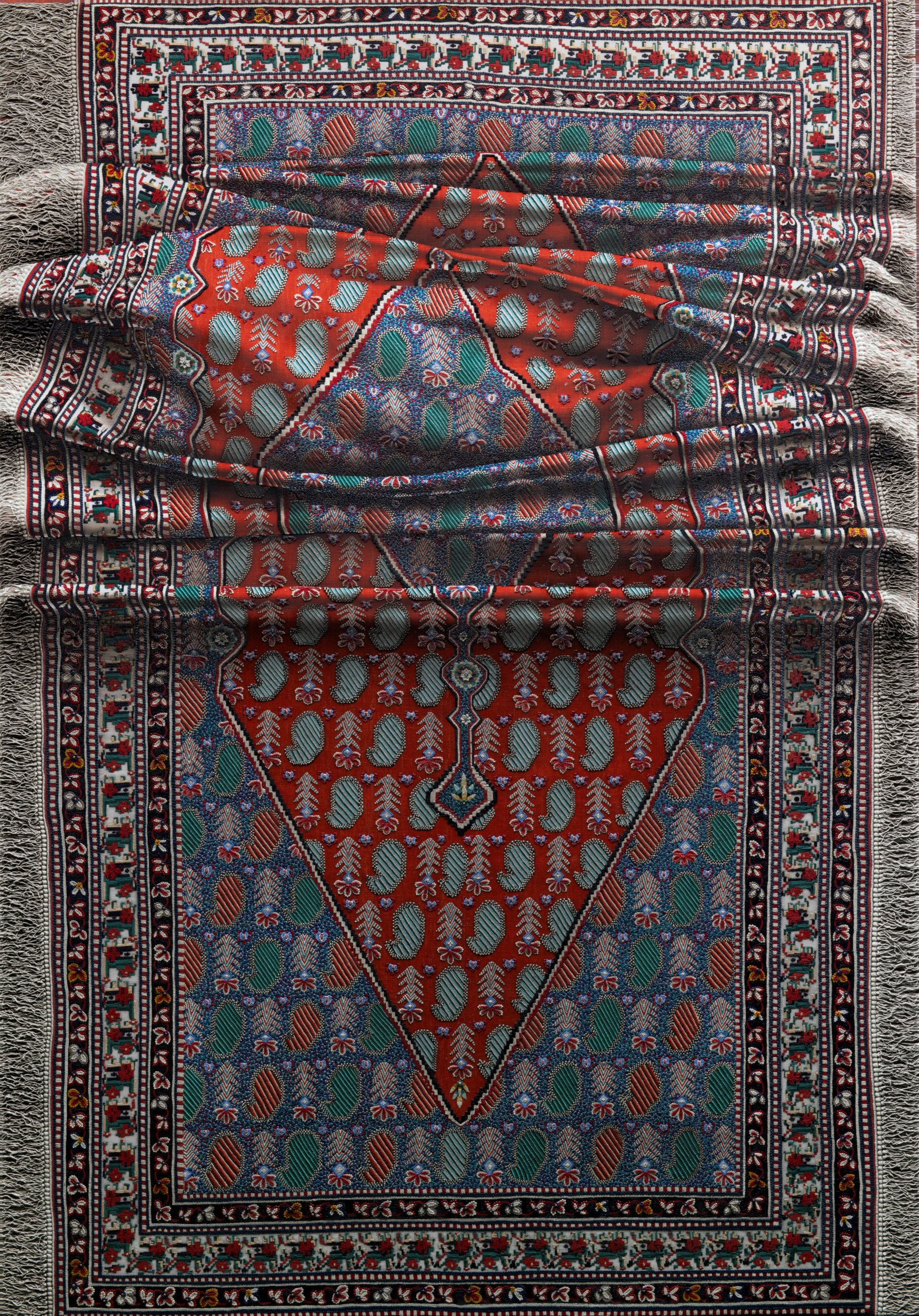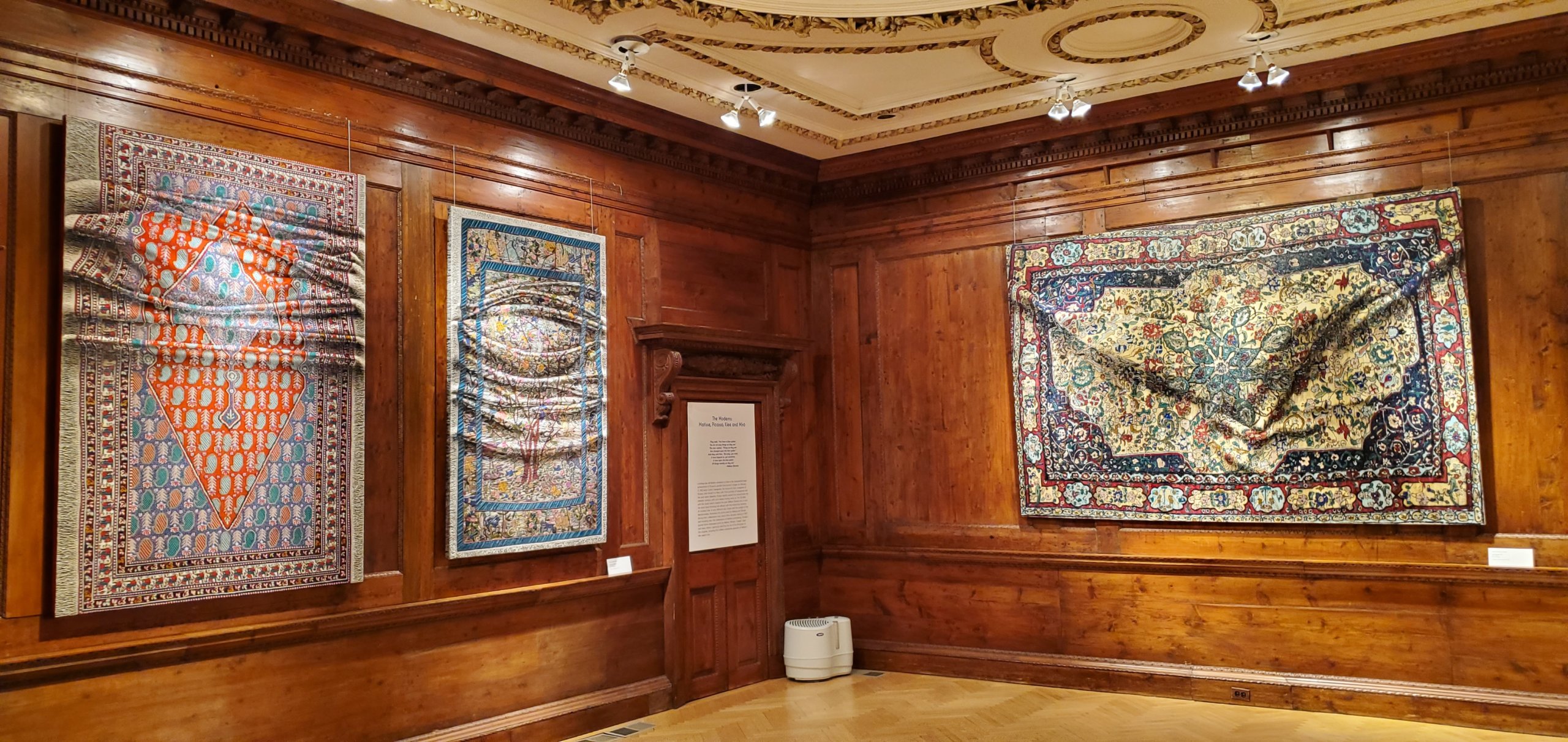
Antonio Santín
Toast to Ashes, 2020
215 x 150 cm
Courtesy of Marc Straus, New York
Like magic flying carpets, triumphs that play with our sense of spatial dimensions are more than an illusionist’s trick. They hold messages and mysteries. They follow in the tradition of weaving Eastern and Western motifs at the Alhambra (in Granada, due south of Santin’s Madrid studio), combining cultures seamlessly. The “tree of life” is emblematic of this gathering of so many beliefs (Islamic, Judaic, Christian, Hindu, Assyrian) in one archetype. The crucial symbolism of blue in an oriental rug is tied not only to truth and honesty but also to the idea of a peaceful afterlife. The wool is dyed in extracts made from the leaves of woad (the original, less colorfast source, grown in western Anatolia) and indigo (a related plant, etymologically “from India” but grown in many regions including Indonesia, Mali and Guatemala since the Spanish conquest in 1524). What lies beneath the folds of Santin’s painting is also intriguing. Lovers of literature may relate these paintings to an enigmatic novella by Henry James, “The Figure in the Carpet,” which compares a character’s lifelong secret to an obscure detail in a Turkish rug: “The figure in the carpet was traceable or describable only for lovers supremely united.”
#NCMAblueperiod
